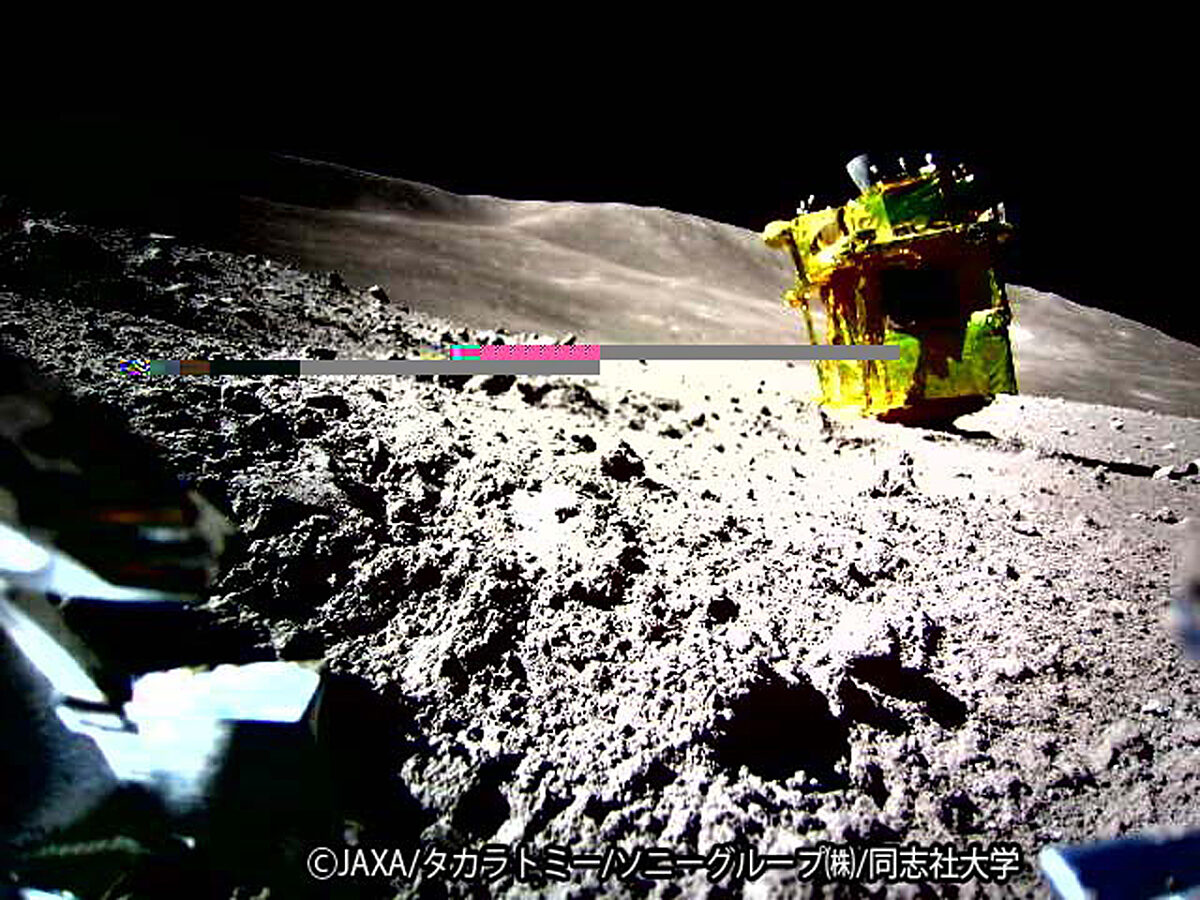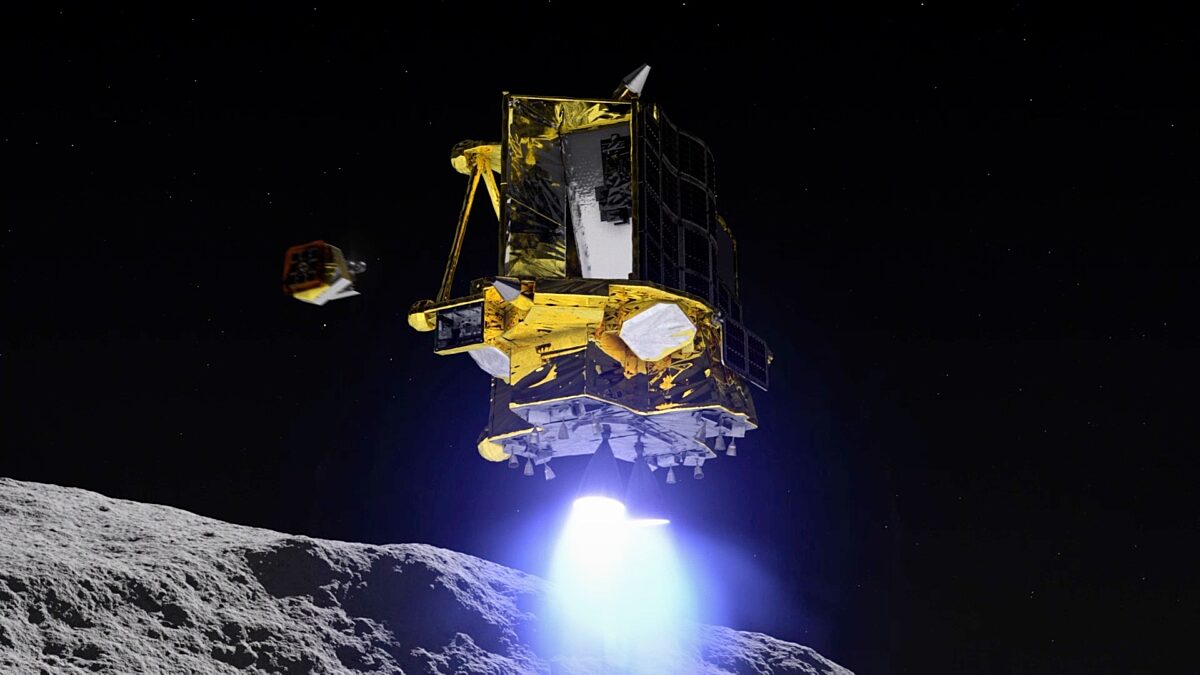SLIM, Japan’s precision lunar lander
Highlights
- SLIM, Japan's Smart Lander for Investigating Moon, landed on the lunar surface on Jan. 19, 2024.
- The JAXA mission succeeded at demonstrating highly accurate landings that can boost the science value of missions.
- The successful landing made Japan the fifth country to land on the Moon.
Japan set its sights on the Moon. And thanks to the innovative navigation and landing systems, these sights were set on a very particular area with the aim of demonstrating “pinpoint” landings. The experimental mission was proof of concept of a lightweight, accurate Moon landing spacecraft. When it succeeded, it made Japan the fifth country to soft-land on the Moon, just months after India became number four with Chandrayaan-3.
The Japan Aerospace Exploration Agency’s (JAXA) Smart Lander for Investigating Moon (SLIM) launched late on Sept. 6, 2023, aboard a H-IIA rocket from the Tanegashima spaceport in Japan. Instead of making a direct shot for the Moon, SLIM entered an initial low Earth orbit as part of a joint launch with the XRISM X-ray space observatory, starting an unusually long, but worthwhile voyage to the Moon.
Ground teams then conducted a range of checkouts before the spacecraft used its engines to raise its orbit. On Sept. 30 the spacecraft made its translunar injection burn, setting it on a unique course to our celestial neighbor. Instead of making the large braking burn made by most Moon-bound spacecraft, SLIM made a lunar flyby, imaging the Moon on Oct. 4 on its way past. SLIM’s smart, fuel-conserving trajectory saw it fly out into deep space on a long, looping orbit that brough it back close to the Moon at the end of December. This lunar approach allowed SLIM to return to and slip into orbit around the Moon with a smaller braking burn. This, crucially, allowed SLIM to save fuel, mass, and cost. SLIM spent around one month in lunar orbit as it prepared for landing.
On Jan. 19, 2024, SLIM successfully landed on target, deploying its two rovers. However, the probe landed in its nose, meaning its solar panels were not oriented correctly to generate power. The spacecraft ran on battery power for several hours before being turned off to allow for a possible recovery of electricity. On Jan. 28, JAXA announced that a shift in lighting conditions had allowed SLIM's solar cells to catch sunlight, allowing it to resume its science operations.

The SLIM spacecraft cost an estimated 18 billion yen ($120 million) to develop. It weighed 200 kilograms (440 pounds) dry, or roughly 700 kilograms (1,540 pounds) when loaded with fuel at launch. This fuel was used for the descent and landing, as well as the earlier maneuvers to get it into lunar orbit.
The target landing site was the rim of Shioli crater. SLIM intended to land within 100 meters (330 feet) of its target point, as opposed to the much larger traditional landing ellipses (areas of probable landing) that are on the order of kilometers in terms of length and breadth.
The spacecraft accomplished this precision landing using an optical navigation system loaded with maps built using data from Japan’s Kaguya, or SELENE, lunar orbiter, which launched in 2007. The preloaded images were matched with data collected during SLIM’s descent, allowing it to locate itself and guide the spacecraft to its target landing site. This process needed to be done speedily and autonomously, for which JAXA developed special image processing algorithms. The spacecraft also had a landing radar for determining its altitude during descent. A laser range finder measured SLIM’s altitude during the final few meters of descent before landing.
While impressive in their own right, this mission’s landing ambitions are also key to the future of scientific lunar exploration. Global interest in the Moon is growing, with many nations and commercial entities entering the field. As lunar exploration advances, so will the need to target specific sites to address salient science questions.
SLIM’s mission architecture hopes to shift the standards of lunar landing missions, from touching down where it’s easy to setting down exactly where desired. The main objective of the mission was to demonstrate these landing capabilities.
But while SLIM was flying light, it still packed payloads for carrying out intriguing science on the lunar surface. Shioli is an impact crater about 300 meters (984 feet) wide, within the larger Mare Nectaris (“Sea of Nectar”). It is a mid-latitude site, offering good lighting, but was chosen for its science potential.
SELENE data suggests that the mineral olivine is present and exposed on Shioli’s slopes. This is noteworthy as it may be material ejected from within the Moon’s mantle, which could hold clues to the mysteries relating to the Moon’s formation and evolution. The Multi-Band Camera (MBC) aboard SLIM is designed to determine the composition of olivine by analyzing the spectra of sunlight reflected off the olivine.

Right before landing, SLIM also deployed a couple of small, unconventional rovers. Lunar Excursion Vehicle 1 (LEV-1) moves using a hopping mechanism and comes equipped with wide-angle optical cameras and direct-to-Earth communications equipment. Its science payloads are a thermometer, radiation monitor, and an inclinometer for measuring slopes and elevation.
Also aboard was the baseball-sized, spherical rover named Lunar Excursion Vehicle 2 (LEV-2), developed by JAXA in collaboration with Tomy, Sony, and Doshisha University. The two halves of the 250-gram (0.55-pound) spacecraft are designed to separate, revealing a pair of cameras and a stabilizer. The rover can crawl across the harsh lunar surface, swinging from side to side to propel itself forward.
SLIM is designed to operate for a single lunar day (about 14 Earth days) on the Moon. Without radioisotope heater units to provide warmth, as deployed on earlier lander and rover missions from NASA, Roscosmos, and the China National Space Administration, the intense cold of the very long lunar night is expected to render its electronics inoperable — as experienced recently by India’s historic Chandrayaan-3 Vikram lander and Pragyan rover.
By sticking the landing, SLIM has already made history and may provide new insights into the history of the Moon. The tech and expertise gained will be inherited by future missions such as JAXA’s Martian Moon eXploration (MMX) mission, which aims to collect samples from Phobos and deliver them to Earth.


 Explore Worlds
Explore Worlds Find Life
Find Life Defend Earth
Defend Earth

